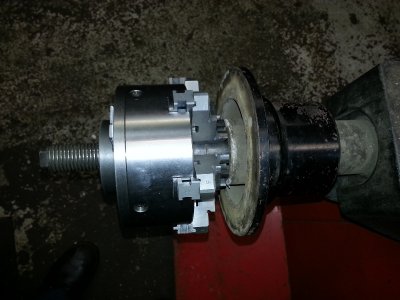- Joined
- Sep 5, 2012
- Messages
- 940
Last week I purchased a new 6-jaw adjust-tru scroll chuck for my G0602, which I am very pleased with, until I had to run it above 1000 RPM and noticed a nasty imbalance. A web search on balancing chucks suggested I try a automobile wheel balancer and since I own a automobile repair shop I gave it a try. I mounted the jaws of the chuck on the spin balancer arbor together with the backing plate and programed it as a 6" rim x 4.5" wide tire. I was able to balance it within a .1 of a gram which eliminated all of the vibration at 1800 RPM.





